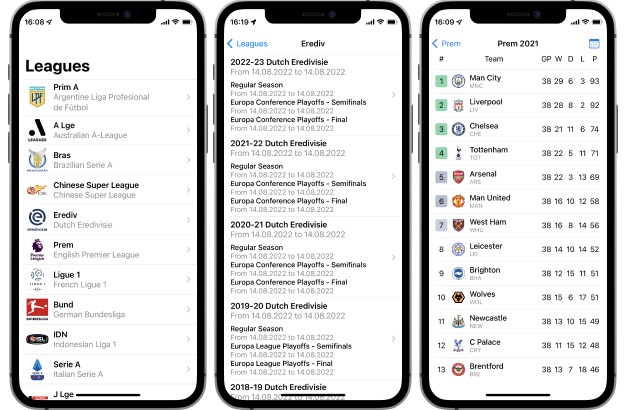CoreNetwork
CoreNetwork module with the basic functionality of requests to the network.
Integration
if as local package
dependencies: [
.package(path: "../CoreNetwork")
],
if as shared package
dependencies: [
.package(name: "CoreNetwork", url: "https://github.com/MosMetro-official/CoreNetwork.git", from: "0.0.1")
],
Structure
The Package is a wrapper for easy network requests, that is includes SwiftyJSON lib inside. Available for iOS 13+, as it uses the async/await structure.
Usage
First of all, it is necessary to designate the main host for the request – for different hosts, you can use different static variables, for convenience.
import CoreNetwork
extension APIClient {
public static var myClient : APIClient {
return APIClient(host: "YOUR_AWESOME_HOST.com")
}
}
It’s also possible at this stage to make a different host for several project profiles, when using, for example, SettingsBundle.
It should be noted that at this stage it is not necessary to attribute the protocol of using HTTP – this is done at the request stage, and HTTPS is always used by default.
Due to the fact that SwiftyJSON is already integrated, it does not need to be additionally connected to the project – we are closely monitoring its updates and updating our wrapper =)
func loadSomeStuff() async throws -> VALUE {
let client = APIClient.myClient
do {
let responce = try await client.send(
.GET(
path: "/MY_AWESOME_PATH"
)
)
let json = JSON(responce.data)
let myValue : VALUE = json["VALUE_KEY"]
return myValue
} catch {
throw error
}
}
NOTE: Path must necessarily start with “/” -> it will throws a “badURL” error.
Delegate
You can subscribe to APIClientDelegate to track some events, 2 methods are implemented now:
public protocol APIClientDelegate {
func client(_ client: APIClient, willSendRequest request: inout URLRequest)
func client(_ client: APIClient, initialRequest: Request, didReceiveInvalidResponse response: HTTPURLResponse, data: Data?) async throws -> Response
}
‘willSendRequest’ tracks when a request is about to be sent – it is useful to use, for example, for a metric or a load indicator (don’t forget about streams). In default implementation does nothing.
‘didReceiveInvalidResponse’ did Receive Invalid Response works out when the server gives an invalid response, by default throws an error with an error code.
Errors
In addition to the errors from SwiftyJSON, we also added 5 errors that can occur when working with the network:
case badURL
case badData
case badRequest
case noHTTPResponse
case unacceptableStatusCode(Int)
The ‘errorDescription’ is not localized yet, so you can override them – it’s OK)
public var errorDescription : String {
switch self {
case .badURL:
return "??? URL is bad."
case .badData:
return "??? The data we received is bad."
case .badRequest:
return "??? Couldn't send a request."
case .noHTTPResponse:
return "??? The server didn't send anything."
case .unacceptableStatusCode(let statusCode):
return "??? Response status code was unacceptable: \(statusCode)."
}
}

